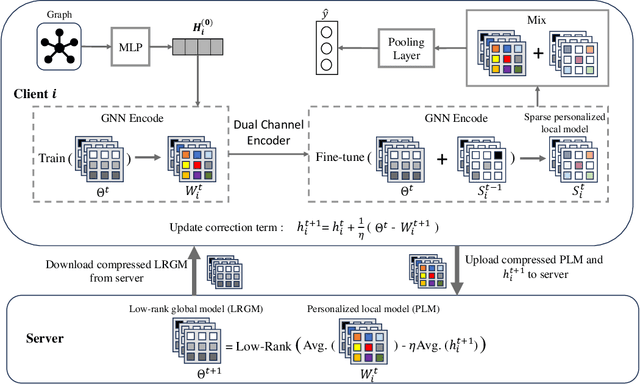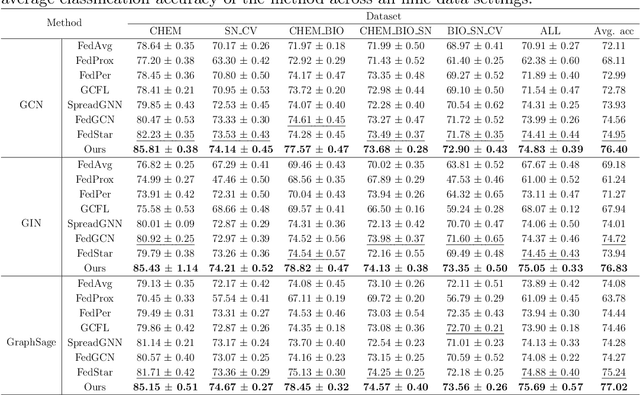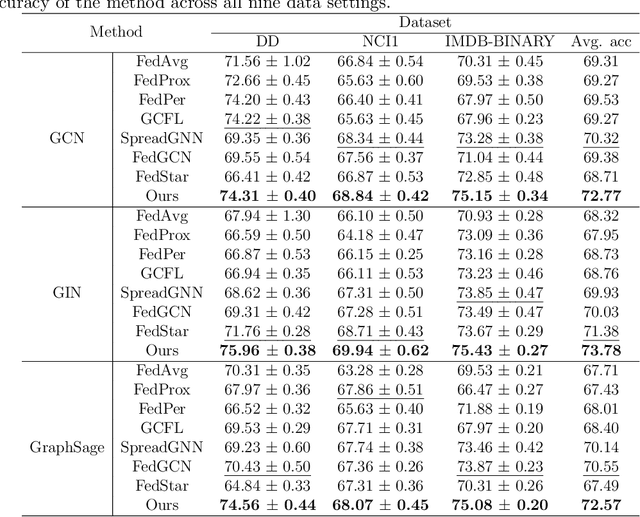Can Ma
Customizing Visual Emotion Evaluation for MLLMs: An Open-vocabulary, Multifaceted, and Scalable Approach
Sep 26, 2025Abstract:Recently, Multimodal Large Language Models (MLLMs) have achieved exceptional performance across diverse tasks, continually surpassing previous expectations regarding their capabilities. Nevertheless, their proficiency in perceiving emotions from images remains debated, with studies yielding divergent results in zero-shot scenarios. We argue that this inconsistency stems partly from constraints in existing evaluation methods, including the oversight of plausible responses, limited emotional taxonomies, neglect of contextual factors, and labor-intensive annotations. To facilitate customized visual emotion evaluation for MLLMs, we propose an Emotion Statement Judgment task that overcomes these constraints. Complementing this task, we devise an automated pipeline that efficiently constructs emotion-centric statements with minimal human effort. Through systematically evaluating prevailing MLLMs, our study showcases their stronger performance in emotion interpretation and context-based emotion judgment, while revealing relative limitations in comprehending perception subjectivity. When compared to humans, even top-performing MLLMs like GPT4o demonstrate remarkable performance gaps, underscoring key areas for future improvement. By developing a fundamental evaluation framework and conducting a comprehensive MLLM assessment, we hope this work contributes to advancing emotional intelligence in MLLMs. Project page: https://github.com/wdqqdw/MVEI.
Gather and Trace: Rethinking Video TextVQA from an Instance-oriented Perspective
Aug 06, 2025Abstract:Video text-based visual question answering (Video TextVQA) aims to answer questions by explicitly reading and reasoning about the text involved in a video. Most works in this field follow a frame-level framework which suffers from redundant text entities and implicit relation modeling, resulting in limitations in both accuracy and efficiency. In this paper, we rethink the Video TextVQA task from an instance-oriented perspective and propose a novel model termed GAT (Gather and Trace). First, to obtain accurate reading result for each video text instance, a context-aggregated instance gathering module is designed to integrate the visual appearance, layout characteristics, and textual contents of the related entities into a unified textual representation. Then, to capture dynamic evolution of text in the video flow, an instance-focused trajectory tracing module is utilized to establish spatio-temporal relationships between instances and infer the final answer. Extensive experiments on several public Video TextVQA datasets validate the effectiveness and generalization of our framework. GAT outperforms existing Video TextVQA methods, video-language pretraining methods, and video large language models in both accuracy and inference speed. Notably, GAT surpasses the previous state-of-the-art Video TextVQA methods by 3.86\% in accuracy and achieves ten times of faster inference speed than video large language models. The source code is available at https://github.com/zhangyan-ucas/GAT.
An Empirical Study on Configuring In-Context Learning Demonstrations for Unleashing MLLMs' Sentimental Perception Capability
May 22, 2025Abstract:The advancements in Multimodal Large Language Models (MLLMs) have enabled various multimodal tasks to be addressed under a zero-shot paradigm. This paradigm sidesteps the cost of model fine-tuning, emerging as a dominant trend in practical application. Nevertheless, Multimodal Sentiment Analysis (MSA), a pivotal challenge in the quest for general artificial intelligence, fails to accommodate this convenience. The zero-shot paradigm exhibits undesirable performance on MSA, casting doubt on whether MLLMs can perceive sentiments as competent as supervised models. By extending the zero-shot paradigm to In-Context Learning (ICL) and conducting an in-depth study on configuring demonstrations, we validate that MLLMs indeed possess such capability. Specifically, three key factors that cover demonstrations' retrieval, presentation, and distribution are comprehensively investigated and optimized. A sentimental predictive bias inherent in MLLMs is also discovered and later effectively counteracted. By complementing each other, the devised strategies for three factors result in average accuracy improvements of 15.9% on six MSA datasets against the zero-shot paradigm and 11.2% against the random ICL baseline.
Multi-Modal Molecular Representation Learning via Structure Awareness
May 09, 2025Abstract:Accurate extraction of molecular representations is a critical step in the drug discovery process. In recent years, significant progress has been made in molecular representation learning methods, among which multi-modal molecular representation methods based on images, and 2D/3D topologies have become increasingly mainstream. However, existing these multi-modal approaches often directly fuse information from different modalities, overlooking the potential of intermodal interactions and failing to adequately capture the complex higher-order relationships and invariant features between molecules. To overcome these challenges, we propose a structure-awareness-based multi-modal self-supervised molecular representation pre-training framework (MMSA) designed to enhance molecular graph representations by leveraging invariant knowledge between molecules. The framework consists of two main modules: the multi-modal molecular representation learning module and the structure-awareness module. The multi-modal molecular representation learning module collaboratively processes information from different modalities of the same molecule to overcome intermodal differences and generate a unified molecular embedding. Subsequently, the structure-awareness module enhances the molecular representation by constructing a hypergraph structure to model higher-order correlations between molecules. This module also introduces a memory mechanism for storing typical molecular representations, aligning them with memory anchors in the memory bank to integrate invariant knowledge, thereby improving the model generalization ability. Extensive experiments have demonstrated the effectiveness of MMSA, which achieves state-of-the-art performance on the MoleculeNet benchmark, with average ROC-AUC improvements ranging from 1.8% to 9.6% over baseline methods.
Linguistics-aware Masked Image Modeling for Self-supervised Scene Text Recognition
Mar 24, 2025Abstract:Text images are unique in their dual nature, encompassing both visual and linguistic information. The visual component encompasses structural and appearance-based features, while the linguistic dimension incorporates contextual and semantic elements. In scenarios with degraded visual quality, linguistic patterns serve as crucial supplements for comprehension, highlighting the necessity of integrating both aspects for robust scene text recognition (STR). Contemporary STR approaches often use language models or semantic reasoning modules to capture linguistic features, typically requiring large-scale annotated datasets. Self-supervised learning, which lacks annotations, presents challenges in disentangling linguistic features related to the global context. Typically, sequence contrastive learning emphasizes the alignment of local features, while masked image modeling (MIM) tends to exploit local structures to reconstruct visual patterns, resulting in limited linguistic knowledge. In this paper, we propose a Linguistics-aware Masked Image Modeling (LMIM) approach, which channels the linguistic information into the decoding process of MIM through a separate branch. Specifically, we design a linguistics alignment module to extract vision-independent features as linguistic guidance using inputs with different visual appearances. As features extend beyond mere visual structures, LMIM must consider the global context to achieve reconstruction. Extensive experiments on various benchmarks quantitatively demonstrate our state-of-the-art performance, and attention visualizations qualitatively show the simultaneous capture of both visual and linguistic information.
AS-GCL: Asymmetric Spectral Augmentation on Graph Contrastive Learning
Feb 19, 2025Abstract:Graph Contrastive Learning (GCL) has emerged as the foremost approach for self-supervised learning on graph-structured data. GCL reduces reliance on labeled data by learning robust representations from various augmented views. However, existing GCL methods typically depend on consistent stochastic augmentations, which overlook their impact on the intrinsic structure of the spectral domain, thereby limiting the model's ability to generalize effectively. To address these limitations, we propose a novel paradigm called AS-GCL that incorporates asymmetric spectral augmentation for graph contrastive learning. A typical GCL framework consists of three key components: graph data augmentation, view encoding, and contrastive loss. Our method introduces significant enhancements to each of these components. Specifically, for data augmentation, we apply spectral-based augmentation to minimize spectral variations, strengthen structural invariance, and reduce noise. With respect to encoding, we employ parameter-sharing encoders with distinct diffusion operators to generate diverse, noise-resistant graph views. For contrastive loss, we introduce an upper-bound loss function that promotes generalization by maintaining a balanced distribution of intra- and inter-class distance. To our knowledge, we are the first to encode augmentation views of the spectral domain using asymmetric encoders. Extensive experiments on eight benchmark datasets across various node-level tasks demonstrate the advantages of the proposed method.
Communication-Efficient Personalized Federal Graph Learning via Low-Rank Decomposition
Dec 18, 2024



Abstract:Federated graph learning (FGL) has gained significant attention for enabling heterogeneous clients to process their private graph data locally while interacting with a centralized server, thus maintaining privacy. However, graph data on clients are typically non-IID, posing a challenge for a single model to perform well across all clients. Another major bottleneck of FGL is the high cost of communication. To address these challenges, we propose a communication-efficient personalized federated graph learning algorithm, CEFGL. Our method decomposes the model parameters into low-rank generic and sparse private models. We employ a dual-channel encoder to learn sparse local knowledge in a personalized manner and low-rank global knowledge in a shared manner. Additionally, we perform multiple local stochastic gradient descent iterations between communication phases and integrate efficient compression techniques into the algorithm. The advantage of CEFGL lies in its ability to capture common and individual knowledge more precisely. By utilizing low-rank and sparse parameters along with compression techniques, CEFGL significantly reduces communication complexity. Extensive experiments demonstrate that our method achieves optimal classification accuracy in a variety of heterogeneous environments across sixteen datasets. Specifically, compared to the state-of-the-art method FedStar, the proposed method (with GIN as the base model) improves accuracy by 5.64\% on cross-datasets setting CHEM, reduces communication bits by a factor of 18.58, and reduces the communication time by a factor of 1.65.
Track the Answer: Extending TextVQA from Image to Video with Spatio-Temporal Clues
Dec 17, 2024



Abstract:Video text-based visual question answering (Video TextVQA) is a practical task that aims to answer questions by jointly reasoning textual and visual information in a given video. Inspired by the development of TextVQA in image domain, existing Video TextVQA approaches leverage a language model (e.g. T5) to process text-rich multiple frames and generate answers auto-regressively. Nevertheless, the spatio-temporal relationships among visual entities (including scene text and objects) will be disrupted and models are susceptible to interference from unrelated information, resulting in irrational reasoning and inaccurate answering. To tackle these challenges, we propose the TEA (stands for ``\textbf{T}rack th\textbf{E} \textbf{A}nswer'') method that better extends the generative TextVQA framework from image to video. TEA recovers the spatio-temporal relationships in a complementary way and incorporates OCR-aware clues to enhance the quality of reasoning questions. Extensive experiments on several public Video TextVQA datasets validate the effectiveness and generalization of our framework. TEA outperforms existing TextVQA methods, video-language pretraining methods and video large language models by great margins.
Falcon-UI: Understanding GUI Before Following User Instructions
Dec 12, 2024



Abstract:Pursuing human-like interaction for Graphical User Interface (GUI) agents requires understanding the GUI context and following user instructions. However, existing works typically couple these two aspects and focus more on instruct-following abilities, while ignoring the importance of understanding the GUI context. In this paper, we introduce an instruction-free GUI navigation dataset, termed Insight-UI Dataset, to enhance model comprehension of GUI environments. Insight-UI Dataset is automatically generated from the Common Crawl corpus, simulating various platforms -- including iOS, Android, Windows, and Linux -- across multiple resolutions on 312K domains. Although GUI interactions vary by context, diverse interfaces share common internal patterns, such as clicking an item to view its details. It implies the feasibility of independent GUI operation learning, followed by joint optimization with instruction tuning. Thereby, we develop the GUI agent model Falcon-UI, which is initially pretrained on Insight-UI Dataset and subsequently fine-tuned on Android and Web GUI datasets, including AITW, AITZ, Android Control, and Mind2Web. With 7 billion parameters, Falcon-UI achieves accuracy comparable to the 72 billion-parameter Qwen2VL on AITZ, validating the alignment between GUI context comprehension and agent performance. Our code and dataset will be open-sourced.
Improving Mathematical Reasoning Capabilities of Small Language Models via Feedback-Driven Distillation
Nov 22, 2024



Abstract:Large Language Models (LLMs) demonstrate exceptional reasoning capabilities, often achieving state-of-the-art performance in various tasks. However, their substantial computational and memory demands, due to billions of parameters, hinder deployment in resource-constrained environments. A promising solution is knowledge distillation, where LLMs transfer reasoning capabilities to Small Language Models (SLMs, $\le$ 1B parameters), enabling wider deployment on low-resource devices. Existing methods primarily focus on generating high-quality reasoning rationales for distillation datasets but often neglect the critical role of data quantity and quality. To address these challenges, we propose a Feedback-Driven Distillation (FDD) framework to enhance SLMs' mathematical reasoning capabilities. In the initialization stage, a distillation dataset is constructed by prompting LLMs to pair mathematical problems with corresponding reasoning rationales. We classify problems into easy and hard categories based on SLM performance. For easy problems, LLMs generate more complex variations, while for hard problems, new questions of similar complexity are synthesized. In addition, we propose a multi-round distillation paradigm to iteratively enrich the distillation datasets, thereby progressively improving the mathematical reasoning abilities of SLMs. Experimental results demonstrate that our method can make SLMs achieve SOTA mathematical reasoning performance.
 Add to Chrome
Add to Chrome Add to Firefox
Add to Firefox Add to Edge
Add to Edge